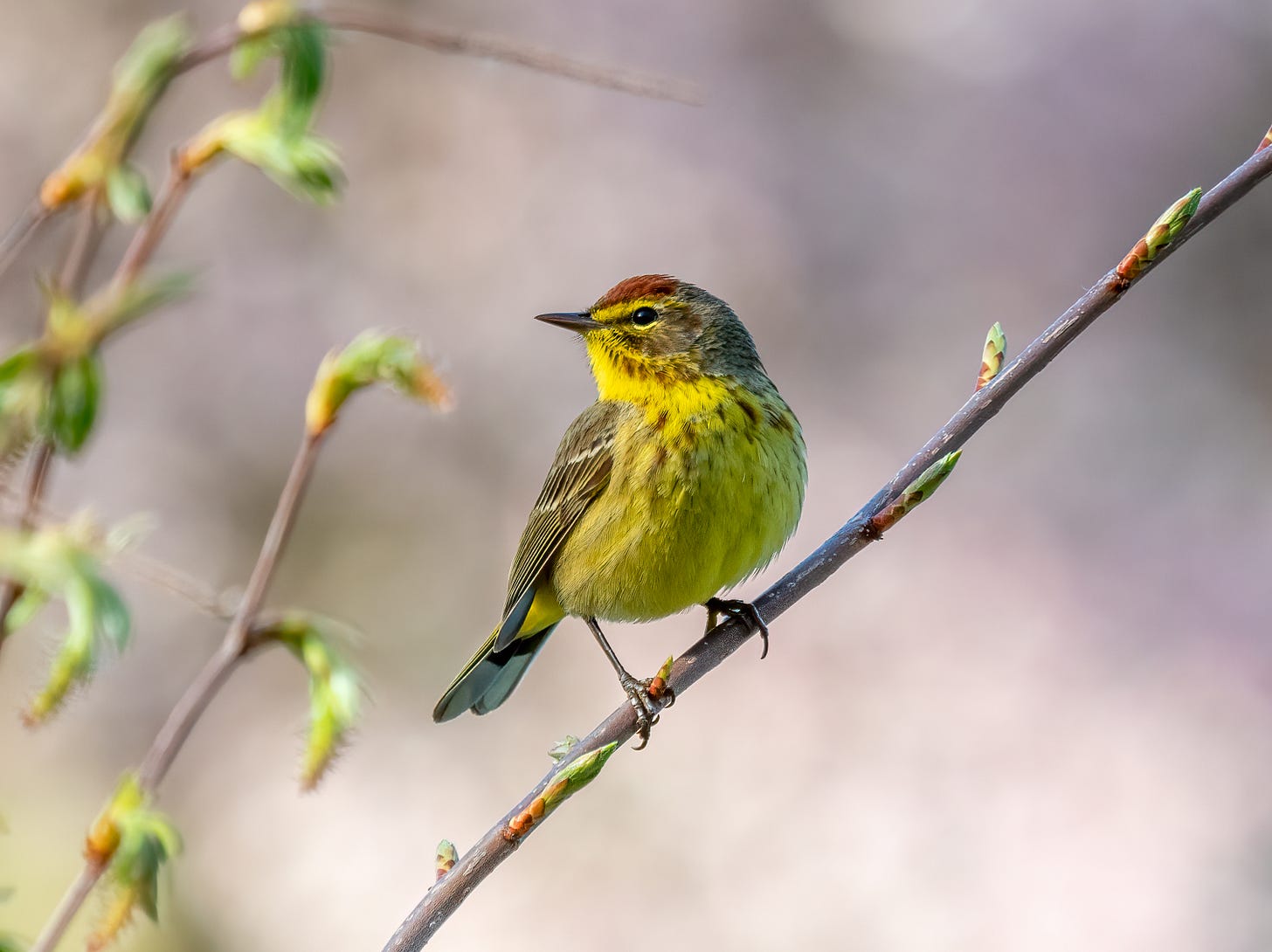Don’t get me wrong—I was thrilled with each new species and grateful for Tom’s guidance. But how do you write about a day that averaged one lifer every fifteen minutes?

If I had spotted just one, the arc would write itself: preparation, anticipation, journey, effort, eventual achievement, celebration.
But eight? That’s not an arc—that’s an ambush. A very exciting one, but still.
So, instead of a play-by-play of each new species, I want to tell you what the day felt like.
Before that though, here are the lifers I saw across Breezy Point that unseasonably warm late March day, largely thanks to Tom.
Sanderling, dunlin, lesser black-backed gull, black scoter, piping plover, long-tailed duck, common eider, harlequin duck
(This list isn’t ordered chronologically, but by how embarrassed I am that I haven’t seen that species before, starting with the most shameful.)
Tom is a wonderfully kind, experienced birder, a Brit who has lived in New York for decades, and a lifelong supporter of Sheffield Wednesday (which I learned that day is certainly not Sheffield United). He and I connected on Discord after we met in Jamaica Bay. When he asked where I wanted to bird together, I suggested Brooklyn hotspots I haven’t explored much, like some areas of Prospect Park and Green-Wood Cemetery.
hotspot (n.) – a specific park, beach, etc., with generally productive birding. A popular birding location.
Thankfully, Tom instead suggested we try the beaches around Breezy Point, a cooperative community on the west end of the Rockaway peninsula.
When I was growing up, my family would take long road trips along the east coast. We’d make stops in isolated islands or towns along the shores of the Carolinas and Georgia. Breezy Point—tucked away in its own corner of Queens—felt like one of those places. All the charm of a beachside community, but you could tell, just by driving through it, that the residents value their privacy.
We drove through Breezy Point, to the far end of the peninsula, and parked in a permit-required lot.
Once out of the car, binoculars and scopes in hand (I’m still using Anne’s scope—thank you, Anne!), Tom asked: “I’ll keep the checklist?” I agreed, and he immediately began naming birds.
“Cardinal, house sparrow, junco.”
In disbelief, I scanned the thickets and roads around the lot, maybe spotting a single sparrow through some bare branches.
“Yellow-rumped, robin, song sparrow,” he continued.
name shortening - Birders will often shorten the names of common species. Tom heard a yellow-rumped warbler but just said “yellow-rumped” because in our region, and in that habitat, there were no other yellow rumps to confuse it with.
How was Tom seeing these birds, without using his binoculars, with such certainty?
“Oh, a field sparrow. A starling.”
Wait, is he even looking up from his checklist?
Of course, Tom was birding by ear, a difficult skill perfected only by those with years of experience. From then on, I knew I was in for a treat that day. Tom explained: “If I hear it, I know it’s there. Why do I need to see it?”
He’s right. In fact, I find that birding by ear makes me even more present. When I bird by sight, sure, I can hear and identify standard chips and chirps. But when I close my eyes, the aural avian world opens around me.
From the lot, we trekked down a wide sandy path to the beach. “This walk can feel like a bit of a trudge,” Tom said. “It’s better when you’re with someone, though. Goes much faster.”
Eastern phoebes darted along the reeds and grasses that bordered the path, doing their best to snag insects out of thin air. A male palm warbler, in gorgeous spring plumage, landed right next to us.
We emerged from the bunches of song sparrows and red-winged blackbirds to the shore’s sharp undercurrent of wind and endless roll of waves.
Then, as if on a conductor’s cue, a visual symphony unfurled around us: streams of northern gannets in the hundreds soared just twenty yards offshore; a smattering of long-tailed ducks bobbed and dove beneath the whitecaps; flocks of delicate sanderlings lifted and settled, lifted and settled along the ocean’s edge; a lone piping plover glided into view from the dunes; a pair of American oystercatchers stood stately, taking in the balance and harmony.
People who say nothing is perfect don’t spend enough time outside.
After circumnavigating Breezy Point Tip, Tom was eager to introduce me to other spots. We drove to Riis Landing and Floyd Bennet Field, two birding destinations I hope to return to soon.
At the end of a long, fulfilling excursion, Tom dropped me off at the Coney Island-Stillwell Ave stop. On the platform, I stood waiting with hoards of other tired and sun-kissed New Yorkers who had also enjoyed their days outside.
That’s all a birder is, I think. Someone who likes being outside and happens to see something perfect flutter in the branches above them. Or, someone who sees eight perfect new somethings in one glorious day, and has no idea how to write about it.
Lifers (all Breezy Point):
210: Lesser Black-backed Gull (3)
211: Dunlin (20)
212: Sanderling (>400)
213: Piping Plover (8)
214: Long-tailed Duck (>40)
215: Black Scoter (>100)
216: Harlequin Duck (1)
217: Common Eider (3)
Photo of palm warbler courtesy of Wikimedia Commons.







What a wonderful description of the day at Breezy Point, Floyd Bennett and Riis Landing. It is so exciting to see all these beautiful birds and have so many life birds. To think these natural areas are in NYC.